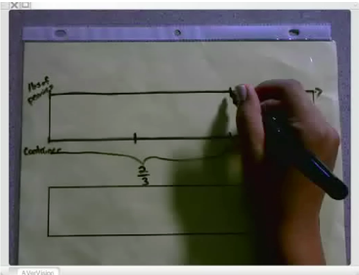Mathematics 7 (Grade 6/7)
2. Ratios and Proportional Relationships (7.RP/7.G)
In this unit, students extend their understanding of ratios and develop understanding of proportionality to solve single- and multi-step problems. Students use their understanding of ratios and proportionality to solve a wide variety of percent problems, including those involving discounts, interest, taxes, tips, and percent increase or decrease. Students solve problems about scale drawings by relating corresponding lengths between the objects or by using the fact that relationships of lengths within an object are preserved in similar objects. Students graph proportional relationships and understand the unit rate informally as a measure of the steepness of the related line, called the slope. They distinguish proportional relationships from other relationships. Students will apply their understanding of proportional relationships to similar figures.
What should my child know and be able to do?
Students will:
Analyze proportional relationships and use them to solve real-world and mathematical problems.
7.RP.A.1
Compute unit rates associated with ratios of fractions, including ratios of lengths, areas and other quantities measured in like or different units. For example, if a person walks 1/2 mile in each 1/4 hour, compute the unit rate as the complex fraction 1/2/1/4 miles per hour, equivalently 2 miles per hour.
7.RP.A.2
Recognize and represent proportional relationships between quantities (SAT® Content - PSDA.01).
7.RP.A.2.A
Decide whether two quantities are in a proportional relationship, e.g., by testing for equivalent ratios in a table or graphing on a coordinate plane and observing whether the graph is a straight line through the origin.
7.RP.A.2.B
Identify the constant of proportionality (unit rate) in tables, graphs, equations, diagrams, and verbal descriptions of proportional relationships.
7.RP.A.2.C
Represent proportional relationships by equations. For example, if total cost t is proportional to the number n of items purchased at a constant price p, the relationship between the total cost and the number of items can be expressed as t = pn (SAT® Content - PSDA.01).
7.RP.A.2.D
Explain what a point (x, y) on the graph of a proportional relationship means in terms of the situation, with special attention to the points (0, 0) and (1, r) where r is the unit rate.
7.RP.A.3
Use proportional relationships to solve multi-step ratio and percent problems. Examples: simple interest, tax, markups and markdowns, gratuities and commissions, fees, percent increase and decrease, percent error (SAT® Content - PSDA.03).
Represent and analyze quantitative relationships between dependent and independent variables.
6.EE.C.9
Use variables to represent two quantities in a real-world problem that change in relationship to one another; write an equation to express one quantity, thought of as the dependent variable, in terms of the other quantity, thought of as the independent variable. Analyze the relationship between the dependent and independent variables using graphs and tables, and relate these to the equation. For example, in a problem involving motion at constant speed, list and graph ordered pairs of distances and times, and write the equation d = 65t to represent the relationship between distance and time (For students in Grade 6 only).
Draw, construct, and describe geometrical figures and describe the relationships between them.
7.G.A.1
Solve problems involving scale drawings of geometric figures, including computing actual lengths and areas from a scale drawing and reproducing a scale drawing at a different scale. Note: Include solving for unknowns with similar figures.
Students will:
Analyze proportional relationships and use them to solve real-world and mathematical problems.
7.RP.A.1
Compute unit rates associated with ratios of fractions, including ratios of lengths, areas and other quantities measured in like or different units. For example, if a person walks 1/2 mile in each 1/4 hour, compute the unit rate as the complex fraction 1/2/1/4 miles per hour, equivalently 2 miles per hour.
- Check for Understanding: Rates with Fractions
- Review/Rewind: Solving Unit Rate Problems
- Enrichment Tasks: Molly's Run | Thunder and Lightning
7.RP.A.2
Recognize and represent proportional relationships between quantities (SAT® Content - PSDA.01).
- Check for Understanding: Proportional Relationships
- Review/Rewind: Introduction to Proportional relationships
- Enrichment Tasks: Art Class, Assessment Variation | Climbing the steps of El Castillo
7.RP.A.2.A
Decide whether two quantities are in a proportional relationship, e.g., by testing for equivalent ratios in a table or graphing on a coordinate plane and observing whether the graph is a straight line through the origin.
- Check for Understanding: Analyzing and Identifying Proportional Relationships | Proportional Relationships: Graphs | Writing Proportions
- Review/Rewind: Is Side Length Proportional to Perimeter? | Proportion Validity Example
- Enrichment Tasks: Buying Bananas, Assessment Variation | Art Class, Variation 1*
7.RP.A.2.B
Identify the constant of proportionality (unit rate) in tables, graphs, equations, diagrams, and verbal descriptions of proportional relationships.
- Check for Understanding: Analyzing and Identifying Proportional Relationships | Rate Problems 2
- Review/Rewind: Proportional Relationships: Graphs | Equations for Proportional Relationships | Proportional Relationships: Bananas
- Enrichment Tasks: Buying Coffee* | Walk-a-thon 2
7.RP.A.2.C
Represent proportional relationships by equations. For example, if total cost t is proportional to the number n of items purchased at a constant price p, the relationship between the total cost and the number of items can be expressed as t = pn (SAT® Content - PSDA.01).
- Check for Understanding: Writing Proportional Equations
- Review/Rewind: Writing Proportional Equations | Equationsl of Proportional Relationships
- Enrichment Tasks: Art Class Variation 2* | Proportionality
7.RP.A.2.D
Explain what a point (x, y) on the graph of a proportional relationship means in terms of the situation, with special attention to the points (0, 0) and (1, r) where r is the unit rate.
- Check for Understanding: Proportional Relationships: Graphs
- Review/Rewind: Interpreting Graphs of Proportional Relationships | Direct Variation
- Enrichment Tasks: Robot Races* | Robot Races, Assessment Variation
7.RP.A.3
Use proportional relationships to solve multi-step ratio and percent problems. Examples: simple interest, tax, markups and markdowns, gratuities and commissions, fees, percent increase and decrease, percent error (SAT® Content - PSDA.03).
- Check for Understanding: Solving Proportions | Proportion Word Problems | Discount, Tax, and Tip Word Problems | Markup and Commission Word Problems
- Review/Rewind: Constructing Eqautions from Proportional Relationships
- Enrichment Tasks: The Price of Bread | Two-School Dance
Represent and analyze quantitative relationships between dependent and independent variables.
6.EE.C.9
Use variables to represent two quantities in a real-world problem that change in relationship to one another; write an equation to express one quantity, thought of as the dependent variable, in terms of the other quantity, thought of as the independent variable. Analyze the relationship between the dependent and independent variables using graphs and tables, and relate these to the equation. For example, in a problem involving motion at constant speed, list and graph ordered pairs of distances and times, and write the equation d = 65t to represent the relationship between distance and time (For students in Grade 6 only).
- Check for Understanding: Dependent and Independent Variables
- Review/Rewind: <Insert title/link here>
- Enrichment Tasks: Chocolate Bar Sales
Draw, construct, and describe geometrical figures and describe the relationships between them.
7.G.A.1
Solve problems involving scale drawings of geometric figures, including computing actual lengths and areas from a scale drawing and reproducing a scale drawing at a different scale. Note: Include solving for unknowns with similar figures.
- Check for Understanding: Constructing Scale Drawings | Interpreting Scale Drawings
- Review/Rewind: Scale Drawing
- Enrichment Tasks: Floor Plan | Map Distance
|
What are some signs of student mastery?
|
Tools & Technology
Matching Rates: Students must match each rate to its corresponding unit rate. Unit Rate and Price Comparison: In this self-paced Jeopardy game, students will practice calculating various unit rates, and determine which is the better deal. Proportion Jeopardy Game: Interactive Jeopardy game that allows l – 12 different teams to play against each other. The categories are: find the part, find the total, find the percent, word problems and misc. Player will use proportions to answer each question and correct answers will earn money to be used in final Jeopardy. |
More 4 U
View a middle school teacher discussing the mathematics behind standards 7.RP.A.2.C and 7.RP.A.2.D. This video shows how multi-step problems can be solved using a tape diagram.
|



